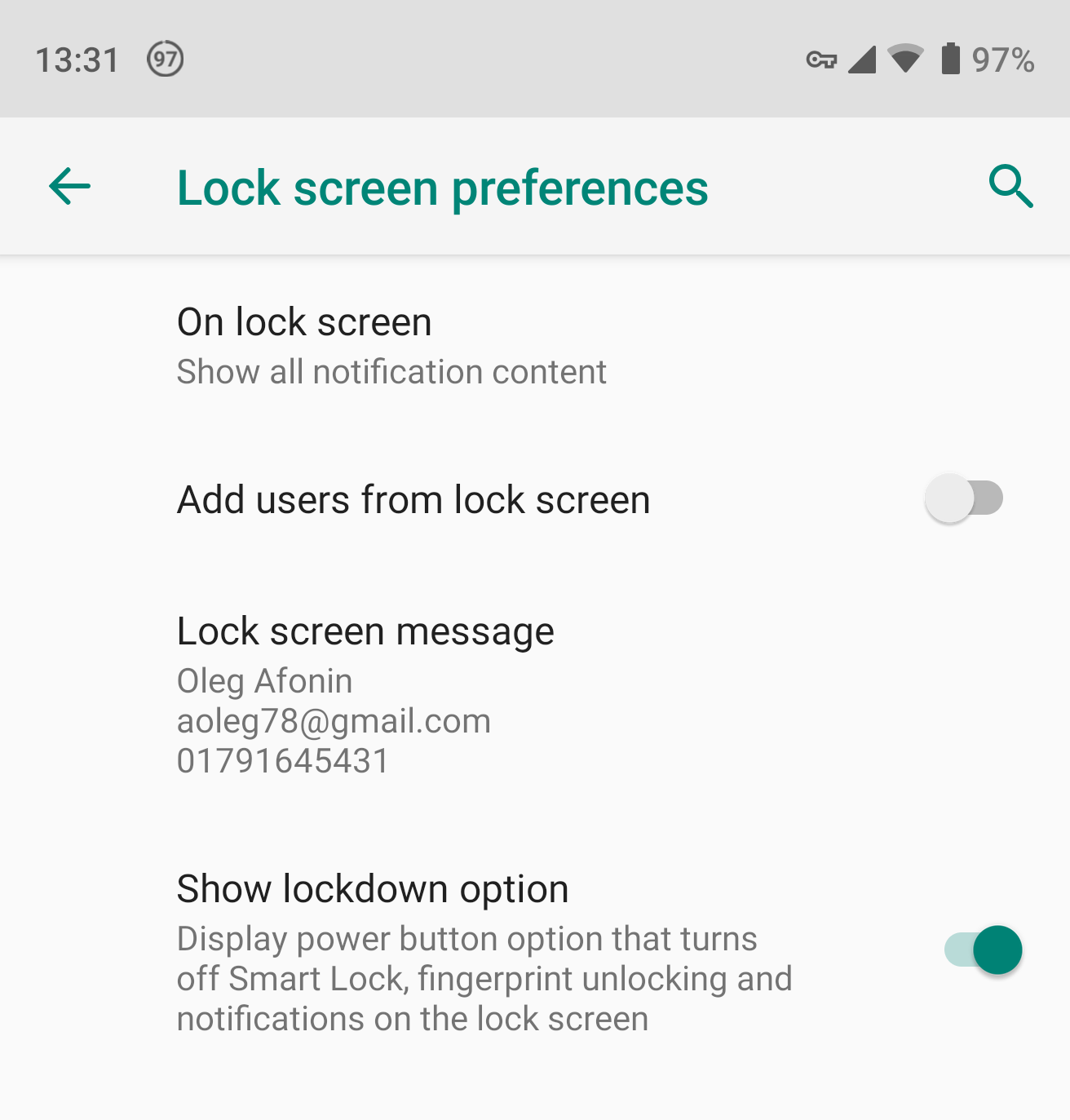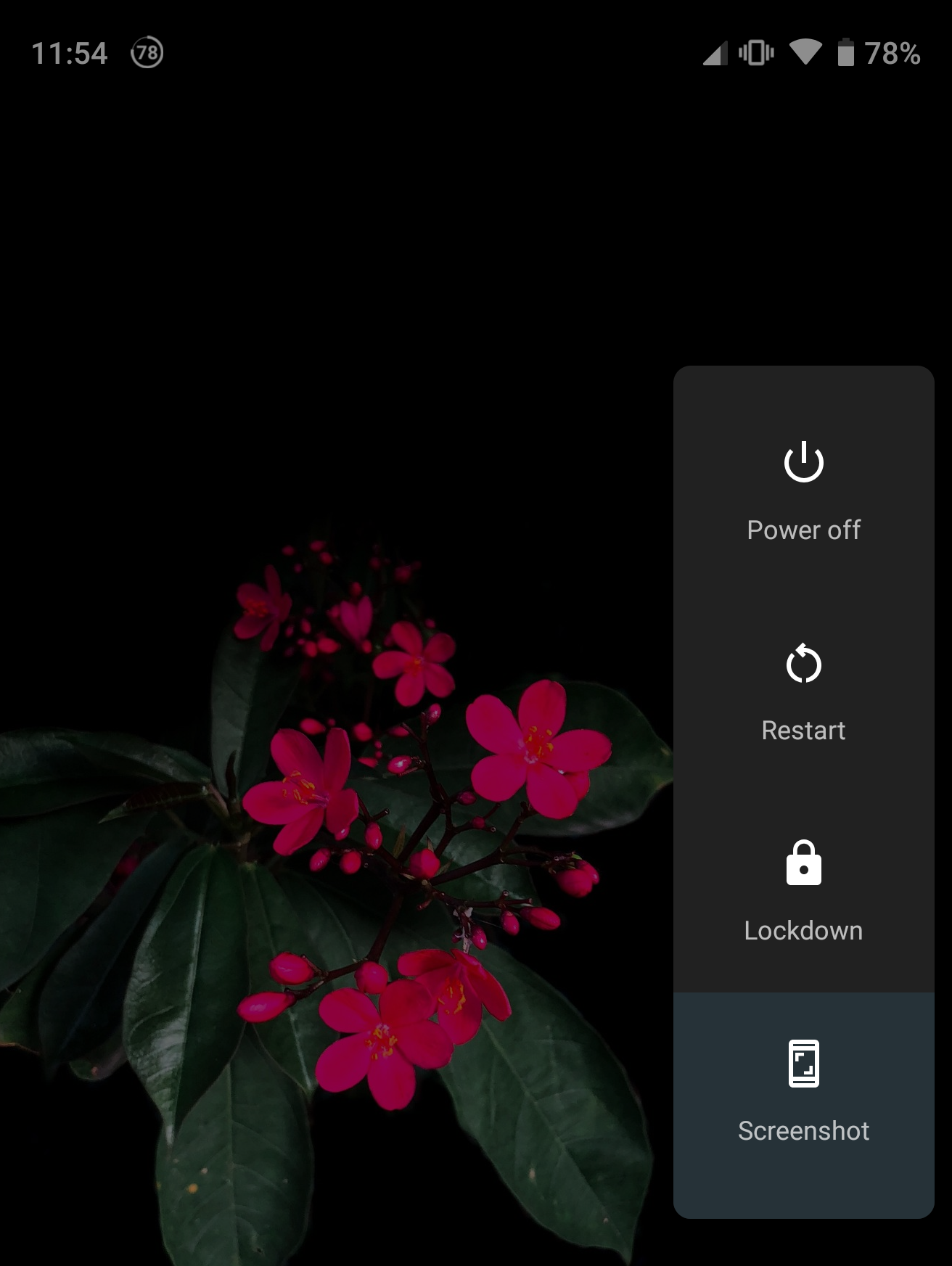We have already covered the emergency SOS mode introduced in iOS 11. When entering this mode, the phone disables Touch ID and Face ID, requiring the passcode to unlock the phone. It appears that Google is taking cues from Apple, adding a new Lockdown Option to the newly released Android 9 Pie. Let us see what is similar and what is different between iOS SOS mode and Android 9.0 Pie Lockdown Option.
In iOS 11, the SOS mode is enabled automatically by default. In https://support.apple.com/en-us/HT208076, Apple documents the new mode. Entering emergency mode on an iPhone is as easy as tapping the side button five times or, on some models, holding the side button and one of the volume keys.
In Android Pie, one must first learn about the existence of the new option. Then, one must manually activate the option in device settings > Security > Lock screen preferences:

Once the user enables “Show lockdown option”, a new option will appear when the user presses and holds the Power button:

To sum it up, Android 9 requires manually enabling the “Lockdown” option in the settings (it’s off by default). In order to actually lock down the phone, the user must perform two actions:
- Press and hold the Power button
- Tap Lockdown in the side menu
The whole process appears to be more intuitive in iOS.
What does the Lockdown mode do in Android 9? According to Google, it disables Android Smart Lock (the ability to unlock the phone with a trusted face, trusted Bluetooth device, or near a trusted location). It also disables biometric unlock (fingerprint scanner), effectively requiring the user to enter their passcode (or pattern) in order to unlock the device. In addition, the “Lockdown” mode will mute notifications on the lock screen, thus requiring the passcode (or pattern) to access notifications.
iOS SOS Mode vs. Android Pie Lockdown Mode
Once the user activates the SOS mode in iOS 11 or 12 (beta), the following things happen:
- Biometric identification (Touch ID/Face ID) is disabled; the user must sign in with a passcode.
- In iOS 11.4.1, USB Restricted Mode is enabled, disabling data transmission over the USB port. If the iPhone is then connected to a computer, the computer will not recognize the device.
Android P takes a different approach. Once the user switches their phone into Lockdown mode, the following things happen:
- Smart Lock features are disabled (the phone will not unlock around a trusted location or in the proximity of a trusted device).
- Notifications will not appear on the lock screen.
- Biometric identification is kind of disabled. Interestingly, while in this mode, the device will still correctly distinguish (and report with different haptic feedback) between recognized and unrecognized fingerprints. However, even a recognized fingerprint will not unlock the device.
What Android Pie’s Lockdown mode does not do is disabling the USB port. If the phone had USB Debugging enabled, you’ll be able to run ADB. By default, Android P (as well as earlier versions of Android) uses “Charging only” when connected to a PC; in order to switch this to PTP or MTP, one must first unlock the device.
Conclusion
While Android P “Lockdown option” is a step in the right direction, we feel it’s too late and too little. If adding this mode, it must be on by default. There must be an easier (and more intuitive) way to invoke this mode, and it must not require the user to look at the device’s screen at all. In its current state, it’s “probably better than nothing (for some)”.




